Exploring Che Guevara's Bolivian shrine 50 years after his death
50 years on from Che Guevara’s death, Sarah Gilbert revisits the place he was killed in Bolivia
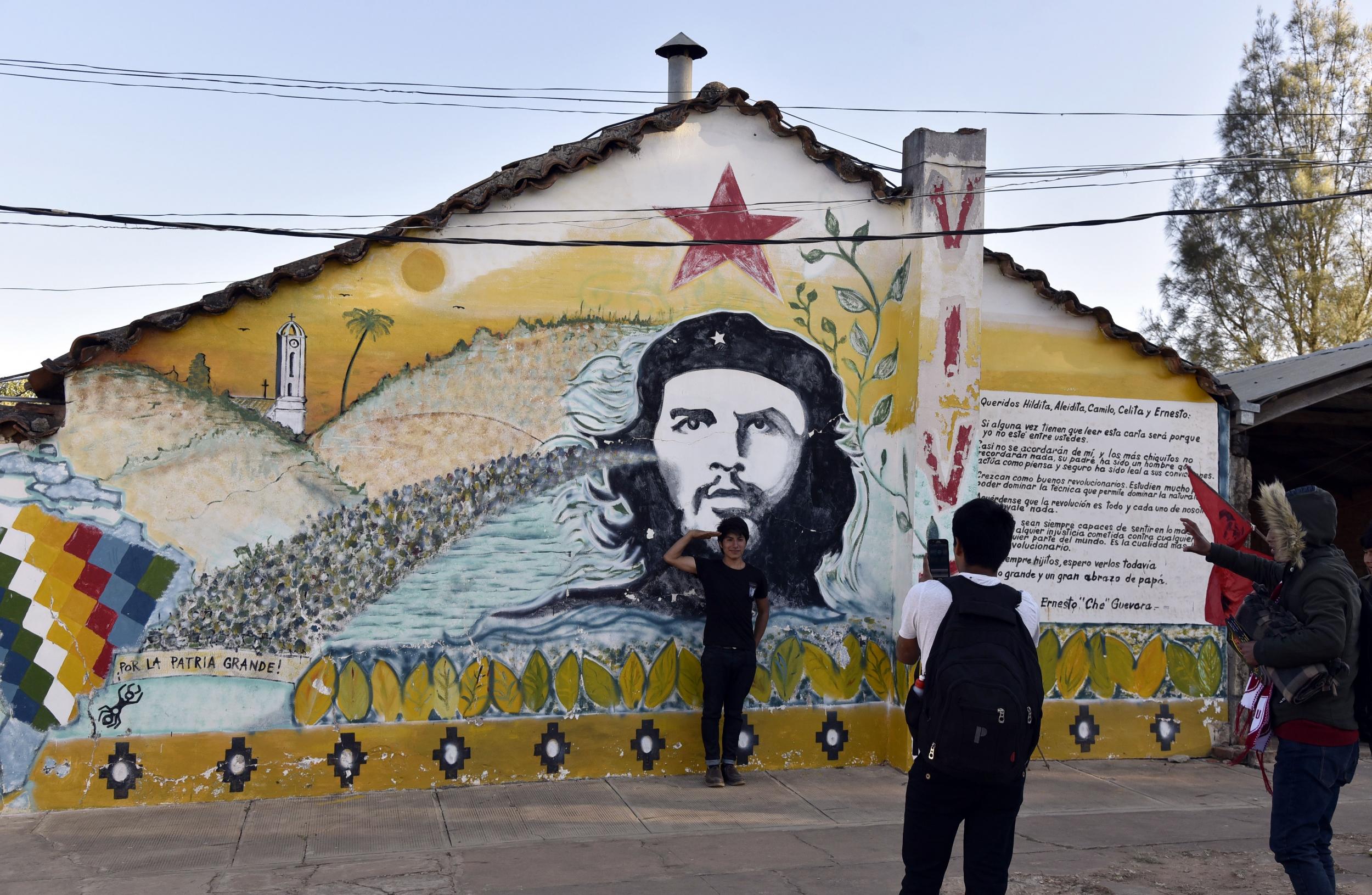
Your support helps us to tell the story
This election is still a dead heat, according to most polls. In a fight with such wafer-thin margins, we need reporters on the ground talking to the people Trump and Harris are courting. Your support allows us to keep sending journalists to the story.
The Independent is trusted by 27 million Americans from across the entire political spectrum every month. Unlike many other quality news outlets, we choose not to lock you out of our reporting and analysis with paywalls. But quality journalism must still be paid for.
Help us keep bring these critical stories to light. Your support makes all the difference.
“Do not shoot! I am Che Guevara and worth more to you alive than dead.”
Just over 24 hours later on 9 October 1967, Guevara’s corpse was laid out on a stretcher and put on display to the world’s press atop the sink in the barren hospital laundry of the Señor de Malta Hospital in Vallegrande.
This small town in eastern Bolivia was founded in 1612, and it has kept its colonial charm, surrounded by mountains and valleys with a temperate climate thanks to its elevation. But Vallegrande’s real claim to fame is its inextricable link to the world’s most famous revolutionary: Argentine-born Ernesto ‘Che’ Guevara.
In 1965 Guevara had left Cuba to turn his attention to other countries, vowing to create “a hundred Vietnams”. After a failed expedition to the Congo, he arrived in Bolivia in late 1966, disguised as a middle-aged Uruguayan businessman named Adolfo Mena González.
With his small band of revolutionaries numbering no more than 50, he set about recruiting Bolivian peasant farmers to his cause. But the US soon heard of his plans, and sent CIA agents and military advisers to help the army of then-president René Barrientos.
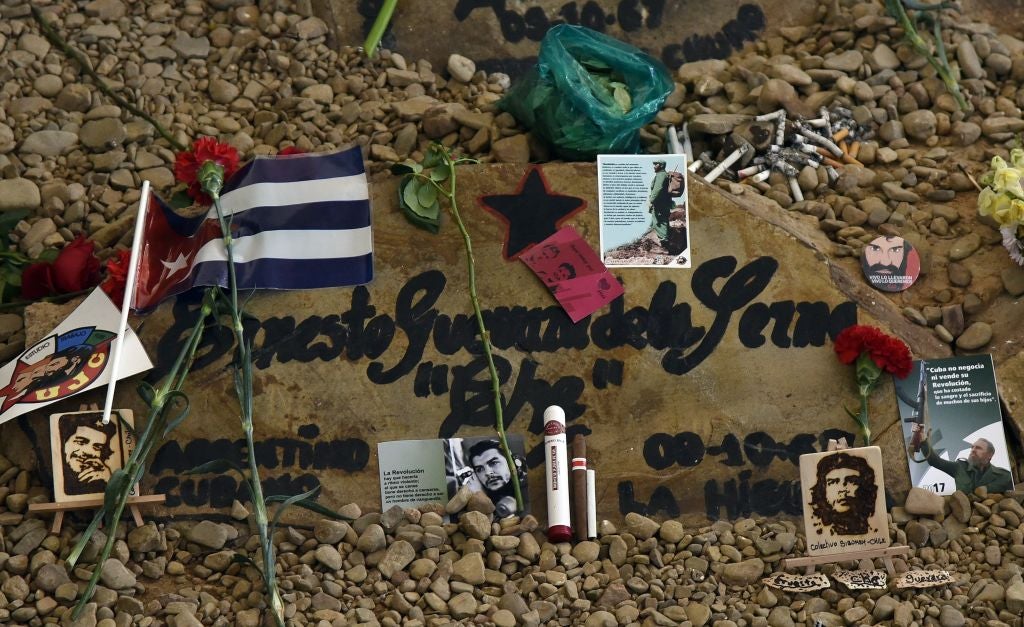
The revolutionaries had based themselves in the jungle scrubland around Ñancahuazú, where the tropical heat sapped their energy, food was in short supply, there was scant support from the locals and they were plagued with illness, including a flare-up of Guevara’s asthma.
For months they were hunted across the region’s tough terrain, until, after a tip-off from a local farmer, on 8 October 1967, Bolivian Rangers surrounded the guerrillas in the Quebrada del Churo. After a brief gunfight, the wounded Guevara was captured and taken to the rustic schoolhouse in the village of La Higuera.
The next day, following orders from the Bolivian president, Guevara was executed. His body was strapped to the landing skids of a helicopter and taken to Vallegrande, around 21 miles away.
Within the open-fronted laundry’s walls an autopsy was carried out and the dirt and blood was washed off his body. At the time of his death, Guevara was already a legend and a hero to many; the poster boy for the revolution, in part thanks to the iconic image taken by a Cuban photographer in 1960.
But on the day of his death, it was a very different image that was broadcast around the world: his beret was gone, his long hair and beard were unkempt and his emaciated frame was laid bare.
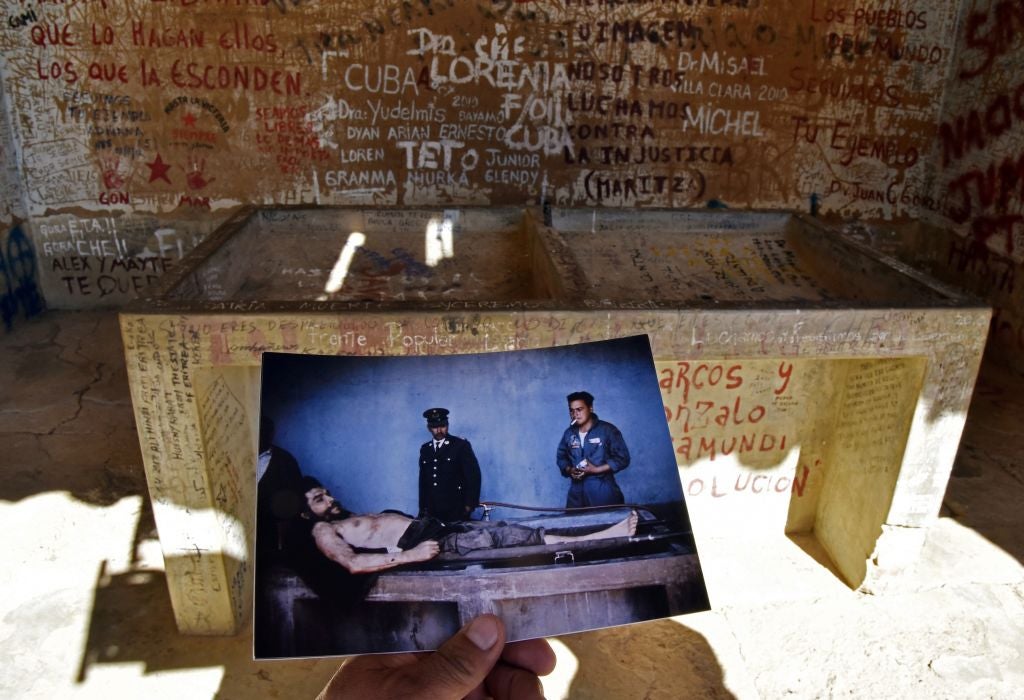
People who saw his body were struck by how Christ-like he looked. Some even said that it was as if his eyes – it is said they reopened on the helicopter journey – were following them around the room. All this added to his mystique. Fidel Castro was already planning a martyr’s funeral in Havana.
After the photo shoot, Guevara’s hands were cut off and sent to La Paz, then to Argentina to verify that the fingerprints matched. After dark, Bolivian soldiers and the CIA buried his body in an unmarked communal grave, where it remained for three decades.
In 1995, General Mario Vargas revealed that Guevara was buried a few metres from Vallegrande’s small airstrip. Cuba sent over a forensic team, hundreds of holes were dug and the remains of 12 people were found. One skeleton was said to be missing both hands. On 28 June 1997, the Cubans claimed to have found Guevara’s body. It was repatriated just before the 30th anniversary of his death. His remains are kept in a mausoleum in Santa Clara.
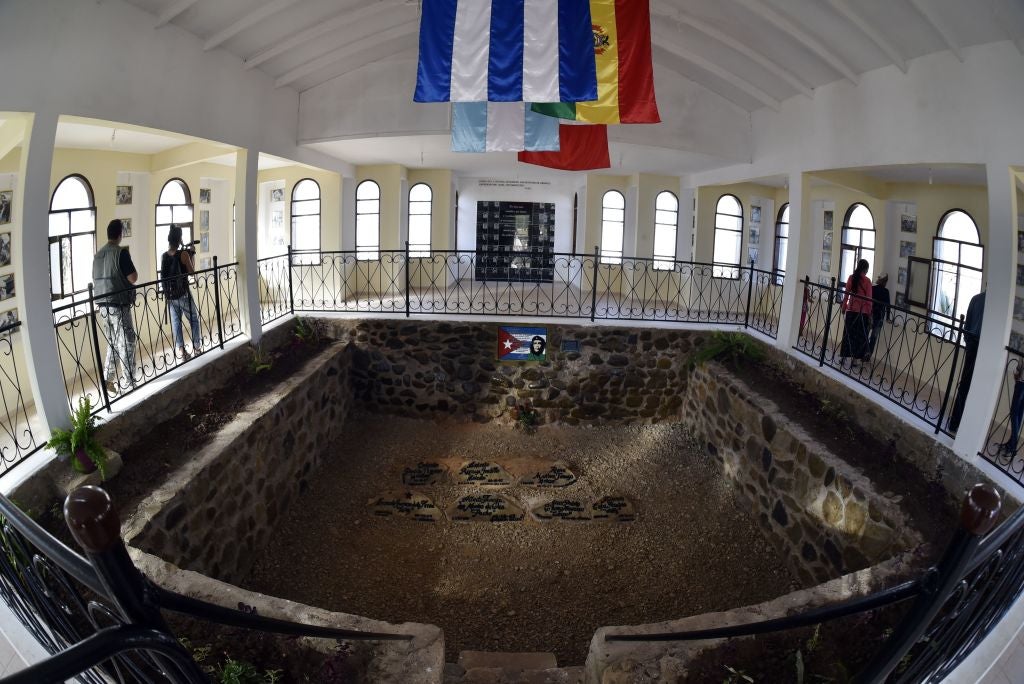
Today, 50 years after his death, the hospital in Vallegrande still operates but the makeshift morgue is now a shrine where graffiti from international visitors pays homage to Guevara’s memory, including his famous slogan, “Hasta la victoria siempre” – “Until victory, always”.
Down a dirt track, plaques and a mural mark the Fosa de Guerrilleros, the area where some of the bodies were found. Nearby, the leftist Bolivian President Evo Morales inaugurated the Ernesto Che Guevara Cultural Centre last year – a low-slung white building with an auditorium, handicraft shop and a library.
Stones in the mausoleum mark Guevara’s original resting place. It’s filled with black-and-white photographs of Che: as a teenager in Argentina, with Fidel Castro and Camilo Cienfuegos in Cuba, and during his many other campaigns. There’s also a plaque honouring the 37 fighters that died alongside him here – people from Cuba, Bolivia, Argentina and Peru. Outside, a garden of remembrance is decorated with their memorial stones.
Today Guevara cuts a more controversial figure: a romantic hero or a murderous thug, depending on your point of view. But whatever you think of him, what is clear is that the legend of Che lives on. Especially in Vallegrande.
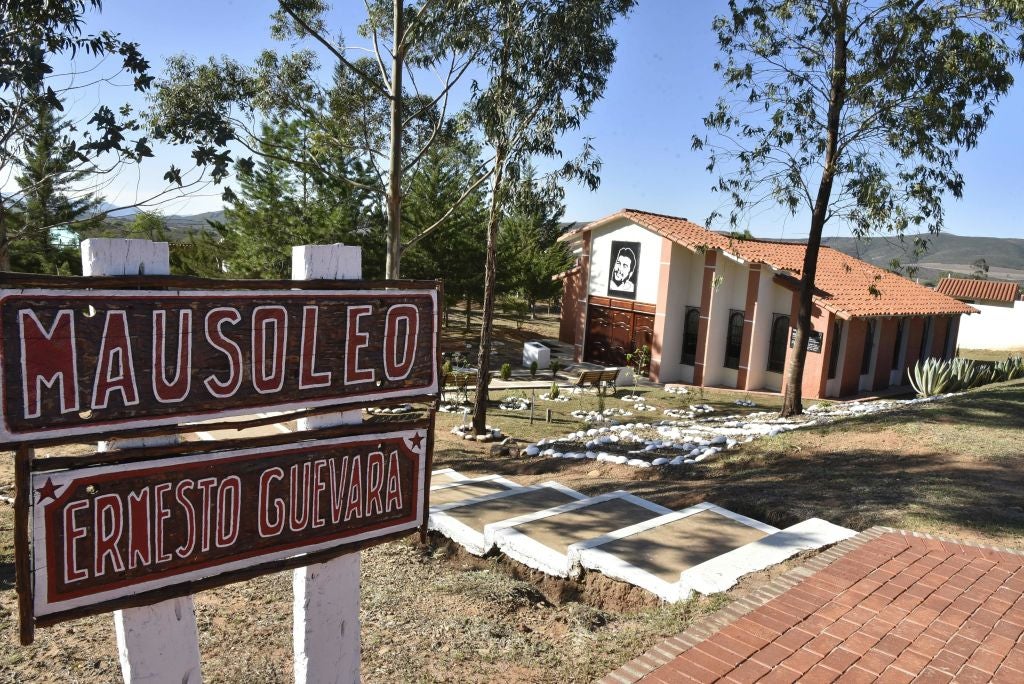
Travel essentials
Getting there
Aracari offers a six-day “Ruta del Che” experience from £2,327 per person on a full-board basis at La Casa del Telegrafista in La Higuera, Plaza Pueblo Hotel in Vallegrande, El Pueblito Resort in Samaipata and the Hotel Camino Real in Santa Cruz, including transfers and excursions but excluding international flights. Flights to La Paz average around £800.
More information
50aniversarioche.bo has maps, videos and photos outlining Che’s time in Bolivia.
Join our commenting forum
Join thought-provoking conversations, follow other Independent readers and see their replies
Comments